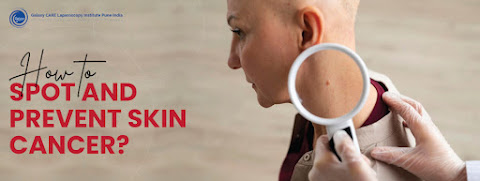HOW TO SPOT AND PREVENT SKIN CANCER?
Introduction: Skin cancer is one of the most prevalent types of cancer worldwide, with over 5 million cases diagnosed each year in the United States alone. The good news is that it's often preventable and highly treatable if detected early. With the right knowledge and awareness, you can take proactive steps to protect yourself and your loved ones from this potentially deadly disease. In this guide, we'll explore how to spot the signs of skin cancer and crucial prevention strategies to keep your skin healthy.
Understanding Skin Cancer: Skin cancer occurs when abnormal cells grow uncontrollably in the skin. The three main types of skin cancer are basal cell carcinoma, squamous cell carcinoma, and melanoma. Basal cell carcinoma and squamous cell carcinoma are more common and usually develop on sun-exposed areas of the skin, such as the face, neck, and hands. Melanoma, while less common, is more aggressive and can spread to other parts of the body if not treated early.
Spotting the Signs: Early detection is key to successful treatment. Knowing how to recognize the signs of skin cancer can help you seek medical attention promptly. Here are some signs to watch out for:
- Changes in the size, shape, or color of moles or birthmarks.
- New moles or growths on the skin.
- Sores that don't heal or continue to bleed.
- Itchy, painful, or tender patches on the skin.
- Irregular borders or asymmetrical shapes in existing moles.
Performing Regular Skin Checks: Regular self-examinations of your skin can help you detect any abnormalities early on. Here's how to perform a skin check:
- Stand in front of a full-length mirror and examine your entire body, including your scalp, face, neck, chest, abdomen, back, arms, and legs.
- Use a hand mirror to check hard-to-see areas like your back, buttocks, and the back of your thighs.
- Pay attention to any new moles or growths and monitor existing ones for changes in size, shape, or color.
- Don't forget to check your nails, palms, soles of your feet, and spaces between your toes.
Protecting Your Skin: Prevention is always better than cure when it comes to skin cancer. Here are some effective strategies to protect your skin from harmful UV radiation:
- Wear sunscreen: Use a broad-spectrum sunscreen with an SPF of 30 or higher, and apply it generously to all exposed skin, including your face, ears, neck, and hands. Reapply every two hours, or more often if swimming or sweating.
- Seek shade: Limit your time in direct sunlight, especially during peak hours between 10 a.m. and 4 p.m. If you're outdoors, seek shade under trees, umbrellas, or awnings.
- Wear protective clothing: Cover up with lightweight, long-sleeved shirts, pants, and wide-brimmed hats to shield your skin from the sun's harmful rays.
- Avoid tanning beds: Indoor tanning beds emit UV radiation that can increase your risk of skin cancer. Opt for sunless tanning products instead.
- Stay informed: Be aware of your skin type, family history of skin cancer, and any medications that may increase your sensitivity to sunlight.
Conclusion: Skin cancer is a serious health concern, but with the right precautions and awareness, you can significantly reduce your risk. By learning how to spot the signs of skin cancer, performing regular skin checks, and adopting sun-safe habits, you can protect yourself and your loved ones from this preventable disease. Remember, early detection and prevention are key to maintaining healthy skin for life. Stay vigilant, stay protected, and prioritize your skin health every day.




Comments
Post a Comment